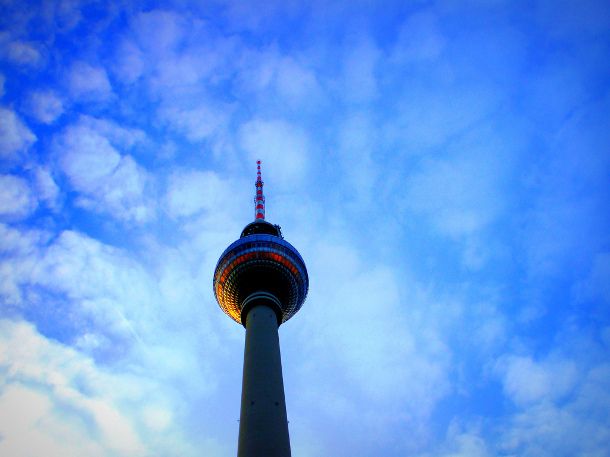
The fall of the Berlin Wall changed the city forever, but it has been a long uphill battle for Germany’s largest city. The costs of reviving East Germany were steep. Yet, through this struggle, the demographics of Berlin have molded into an eclectic mix. Today, due to its abundant real estate, Berlin’s cost of living is still significantly lower than other parts of Germany, attracting a young, bohemian crowd as well as many internationals relocating to the city. Though sometimes still regarded as the black sheep of Germany because of the missing manufacturing industry and lack of corporate headquarters, Berlin is certainly calling a lot of attention to itself in recent years.When the wall fell in 1989, the city faced many challenges rebuilding, however, the unique history behind the wall, in addition to the plethora of artistic and creative communities calling Berlin their home, may be the main reason Berlin has risen to become one of the most visited cities in Europe. The history is uniquely fascinating and has lured many to discover the potential in this city of 3.4 million people, which is expected to grow by 300,000 in the next 10 years.
Heading for Global Status
Berlin may not yet be a truly global city but it is certainly on its way. It is the most diverse city in Germany, with 29% of the population made up of Germans with an immigrant background. The largest international community is Turkish, but a large Arab community, Eastern Europeans, Vietnamese, and Americans also make up the international mix. The number of expats in Berlin grows every year.New construction is taking place everywhere in the city, particularly in heavily tourist trafficked areas such as the Brandenburg Gate, Reichstag, and Friedrichstrasse. Berlin is being remade and moving forward. Though there have been a few embarrassments, such as the lengthy building process of the Berlin Brandenburg International Airport, the city has made many positive changes. Since the fall of the wall, entire neighborhoods – like Potsdamer Platz and Regierungsviertel have been built from scratch, and 90 new bridges have been built over the River Spree to create more easily accessible commuter routes. Berlin is focused on creating “Barrier Free” construction, which works to eliminate obstacles in the city and create dialogue between the local government development agencies and the community. The project is a significant approach to rejecting the barriers the wall once possessed and proclaiming that the city is stepping away from the past and into the future. In fact, when visiting Berlin for the first time, one will have a hard time detecting the former frontier or distinguishing the eastern parts from the western parts.
Berlin has long been a leader in education as one of Europe’s leading research centers, and possesses dozens of higher education institutions within the city. Many of these institutions are adding more programs in English, thereby attracting more internationals to study in the city and encouraging these students to remain and invest back into the city. Most young people in the city speak English well and appreciate the presence of internationals in the community. Some of the universities, such as Humboldt, Freie, and Charite are closely interwoven and allow students flexible options for learning and continuity with their degrees. With an estimated 11 million visitors per year, Berlin is still behind Paris and London, but tourism has been growing year by year and has become a major economic development factor generating millions in revenue for the city. The city is rising to become one of the most visited cities in Europe and is certainly the most talked about. Tourism is the city’s second largest industry and its fastest-growing one. Sandeman’s New Europe Tours was founded in Berlin in 2004 with a unique concept of providing free walking tours. The concept ensures a quality tour in exchange for a tip, the amount of which consumers decide themselves. The company started in Berlin because of its unique history and within 2 years became the leading tour operator in Europe, now offering tours in 18 cities.
A City of Contrasts
Perhaps Berlin’s current mayor, Klaus Wowereit, said it best when he described the city as “poor but sexy.” It is a city with a 11% unemployment rate, but a vibrant, creative way of living.”Many have found that is the perfect city to begin because of the affordable costs of rent and access to creative thinkers.”The spirit of the city’s struggle to overcome hardship has attracted a particularly bohemian community. They have come for the inspiration and have infiltrated every corner of Berlin. The visual presence of the art community is felt in every corner turned. Yet along with this growing art scene, we also see a rise in the tech startup industry.Many have found that is the perfect city to begin because of the affordable costs of rent and access to creative thinkers. Many of the startups emerging from Berlin have a highly visual appeal, as well as content related to the art and music world, such as popular success story SoundCloud with its Swedish founders who decided to start their business in Berlin.Berlin is quickly and proudly becoming the tech hub of Europe, even owning the nickname “Silicon Allee,” (Allee being the German word for Avenue). There are now hundreds of startups developing in Berlin with a new startup founded every 20 hours. Berlin is in the process of remaking itself, and trying to figure out the best roads to take. Richard Florida, a University of Toronto professor of business and creativity studies the correlations between bohemian culture and economic growth. He found that cities that shift from industrial to a creative, technology driven economy take a minimum of a generation to make the shift. Berlin’s historical battles may have been just the reason the startup community is beginning to flourish. Part 2: Why Ashton Kutcher Invests in Berlin: Europe’s Upcoming Startup Hub

